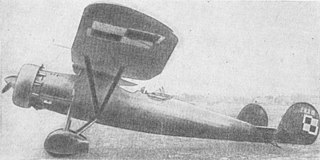
The PWS-19 was a Polish reconnaissance and bomber plane prototype of the 1930s, constructed in the PWS.
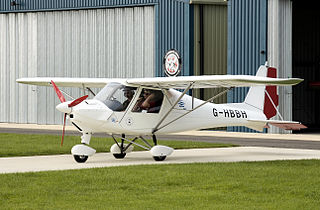
The Ikarus C42 is a two-seat, fixed tricycle gear, general aviation microlight aircraft, manufactured in Germany by Comco Ikarus. It is used primarily for flight training, touring and personal flying.

The Fantasy Air Allegro is a Czech two seat, high wing, tricycle gear, single engine monoplane light-sport aircraft or microlight originally designed and built by Fantasy Air and later produced in the United States by Allegro LSA.

The Esnault-Pelterie R.E.P. 1 and the R.E.P. 2 were experimental aircraft built and flown in France in the early twentieth century by Robert Esnault-Pelterie. These aircraft are historically significant because they were the first to employ a joystick as their main flight control.

The Malmö MFI-10 Vipan was a four-seat light utility monoplane designed and built in Sweden by Malmö Flygindustri. Only three aircraft were built and the type did not enter quantity production.
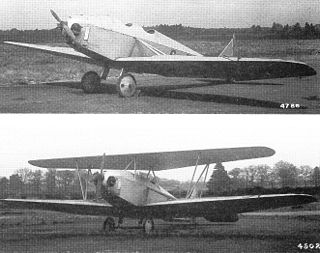
The Parnall Pixie was a low powered British single-seat monoplane light aircraft originally designed to compete in the Lympne, UK trials for motor-gliders in 1923, where it was flown successfully by Norman Macmillan. It had two sets of wings, one for cross-country flights and the other for speed; it later appeared as a biplane which could be converted into a monoplane.
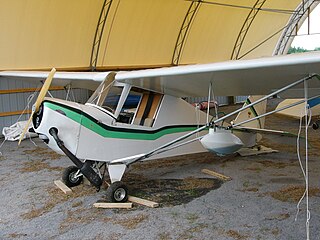
The Fisher FP-101 is an American single-seat, high-wing, conventional landing gear, tractor configuration single engine ultralight aircraft that was available in kit form from Lite Flite of South Webster, Ohio and later Fisher Flying Products of Edgeley, North Dakota.
The RAE Hurricane was a single-seat, single-engined light monoplane designed and built by the Aero Club of the Royal Aircraft Establishment for the 1923 Lympne Motor Glider Competition. It was underpowered with an unreliable engine. Re-engined, it flew in many races, with first place in the 1926 Grosvenor Challenge Cup its greatest success.
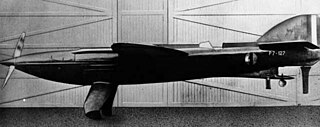
The Piaggio P.7, also known as the Piaggio-Pegna P.c.7, was an Italian racing seaplane designed and built by Piaggio for the 1929 Schneider Trophy race.
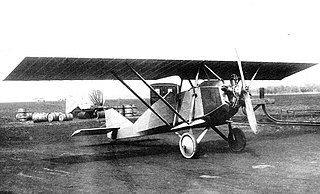
The PWS 3 was a Polish sport aircraft, developed in 1927 by PWS, which remained a prototype.
The FFV Aerotech BA-14 Starling is a Swedish two-seat light monoplane designed by Björn Andreasson and developed as a joint venture between Malmo Forsknings & Innovations and FFV Aerotech.
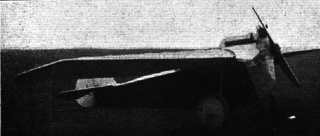
The Carley C.12 was a small Dutch single seat sporting monoplane from the 1920s. There were several developments but only small numbers were produced.
The Gidrosamlet Che-24, 26 and 29 are closely related light flying boats designed and built in Russia from 2010.
The Bristol Monoplane was the first monoplane designed and built by the British and Colonial Aeroplane Company.

The Merville D.63 was a modification of the Druine D.62 Condor with a nosewheel undercarriage, modified fin and French engine. It flew in 1962.
The unsuccessful French Farman F.200 of 1923 shared its type name with the 1929 Farman F.200, the progenitor of a series of parasol wing tourers. It was a two-seat touring aircraft, with a low, thick, cantilever wing. Only one was built and only briefly tested.
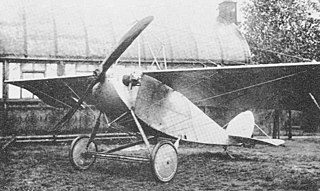
The Silesia S-3 was the first design from the Polish Sopora brothers to fly. It was a low power, single seat, high wing light aircraft. Only one was built and its flying time was limited.

The Politechnika Warszawska PW-4 Pelikan was a motor-glider variant of the two seat Polish PW-3 Bakcyl glider. Only one flew.
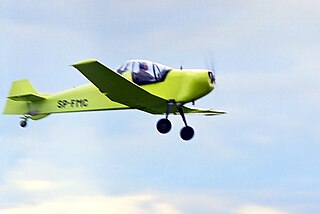
The Aero AT-1, a.k.a. Antoniewski AT-1, is a two-seat, low wing, ultra-light sport aircraft, developed by Tomasz Antoniewski, manufactured in Poland by Aero AT in ready-to-fly certificated form and as a kitplane.
The Nicholson Junior KN-2 was a low power, high wing, two seat, cabin monoplane intended for sport or flight training in the United States in the late 1920s. Only one was built.














